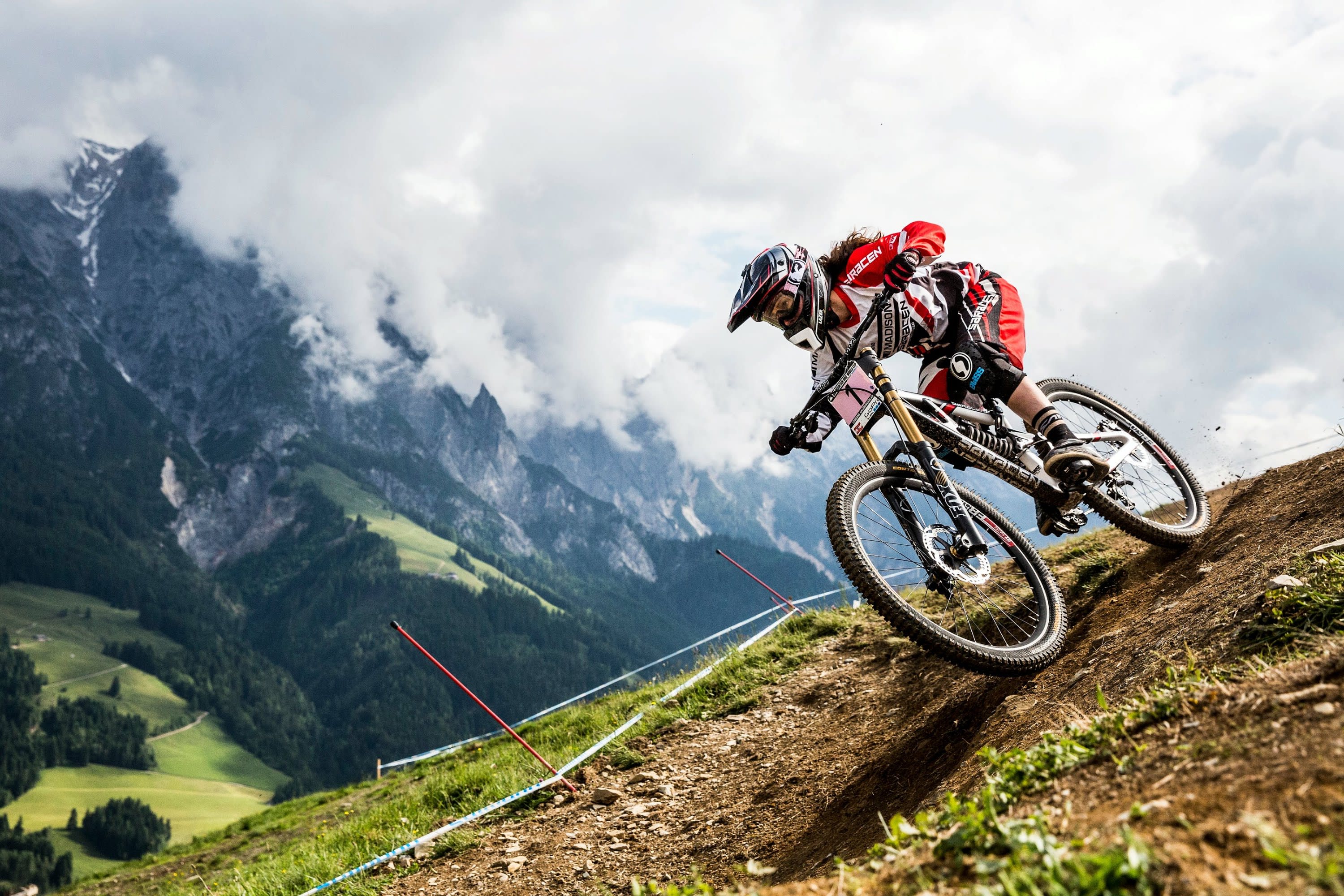
The world's best downhill biking spots
If you're bored of cycling and want to add a little adrenaline to your rides and escapades on the mountainside (or volcano), we've selected a dozen or so must-see destinations for d
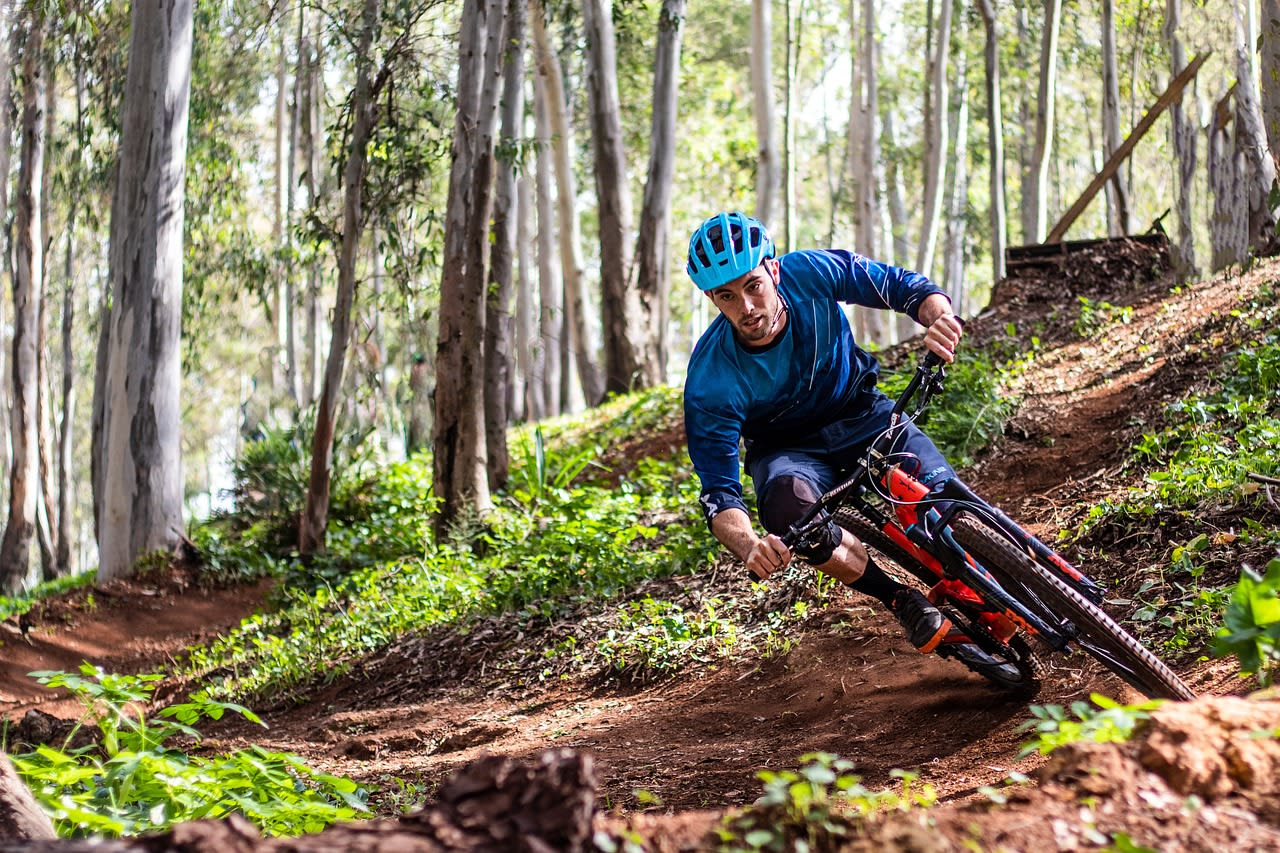
Downhill mountain biking, also known as downhill, is an exciting form of mountain biking that demands technique and bravery from riders. Discover the practical tips you need to get to grips with this sport: learn how to choose the right spot, the right equipment, and much more.
Welcome to Manawa, the website for booking outdoor activities around the world. From diving to canyoning, we connect adventure enthusiasts with professional local instructors to guarantee unforgettable experiences.
You've had enough of cycling? Why not opt for a downhill mountain bike, to enjoy the thrill of speed and control that DH offers?
This demanding discipline requires control and precision, but will give you a lot of pleasure and thrills! Are you ready to take on the role of Myriam Nicole, and for you gentlemen, the best riders in the Red Bull Rampage?
Created for descending steep slopes, the downhill mountain bike stands out for its solidity and generous suspension, which absorbs shocks and obstacles at high speeds. Downhill races are impressive, showcasing the speed, control and courage of riders who continue to push the boundaries of technique and physical performance.
That's why it's important to be aware of the parameters you need to know before venturing out on a downhill mountain bike! Here's our advice on how to get started.
If you've ever set foot on a surfboard, you'll agree with us: it's out of the question to do your first session in Teahupoo or Jaws without any experience or training, unless you're a total kamikaze...
Well, in downhill mountain biking, it's the same thing: the choice of the first spot is going to be crucial for the rest. Taking log after log is clearly not a good idea, and will put you off MTB Downhill more than anything else.
That's why starting out in a bike park can be a good option. The green and blue downhill mountain bike trails can help you learn the right reflexes and trajectories, as well as giving you the confidence you need for your next sessions. If you quickly master the right technique, you'll have taken a big step forward in your DH mountain biking apprenticeship.
In France, you'll find some great places to start out, such as Annecy's Semnoz downhill mountain bike course, which has a negative vertical drop of 1,300 metres. You'll be accompanied by an instructor who will advise you on the techniques and safety protocols involved in this sport, and share with you all his knowledge of the region and the Semnoz.
If you're heading to the French Overseas Territories, we recommend the Piton Maïdo downhill mountain bike trail on Reunion Island, where you can cover a distance of 35 km in 4 hours - enough time for a great half-day's activity!
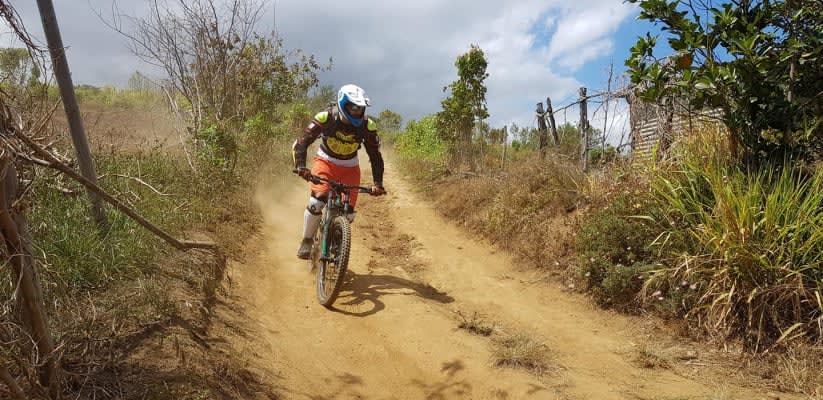
In Downhill mountain biking, the aim of the game is to get down a rough track as quickly as possible, managing all the obstacles and jumps that come your way. Riding technique is important, but choosing the right bike is just as important as choosing the right spot. As you can see, having a solid bike with impregnable wheels is a must!
Choose a bike that's light, strong and has effective suspension, ideally front and rear. This will contribute to your comfort and performance, but above all to your safety. If you're a beginner, you're better off with a rigid frame, which will limit your speed on descents and should save you a few nasty spills! Beware, however, that a bike with a rigid frame will be less easy to handle. You should also opt for hydraulic disc brakes, for effective, progressive braking.
The size of the bike will depend on your stature, so don't hesitate to ask for advice in specialist shops (particularly about settings), especially as this type of mountain bike represents a substantial investment. At the end of the day, you're in for a great time, so go for it!
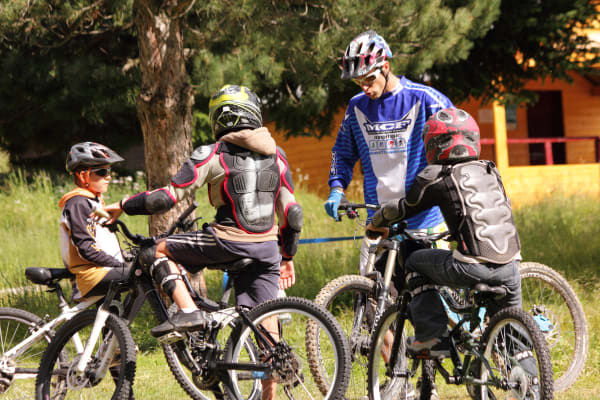
As you can see, downhill mountain biking is a highly technical discipline in which you can easily push yourself beyond your limits. But this constant commitment could also result in a few falls, unless you're a gifted DH rider! So you need to be fully equipped to protect your body.
Remember to buy: a full-face downhill helmet, knee and elbow pads, back protection, long gloves, protection for the forearms, shoulders, shins and back of the neck, a breathable t-shirt under the protective waistcoat, a jersey, thick, sturdy shorts, good shoes...
You'll look a bit like Robocop, but you'll be protected from physical pain - ideal for making faster progress!
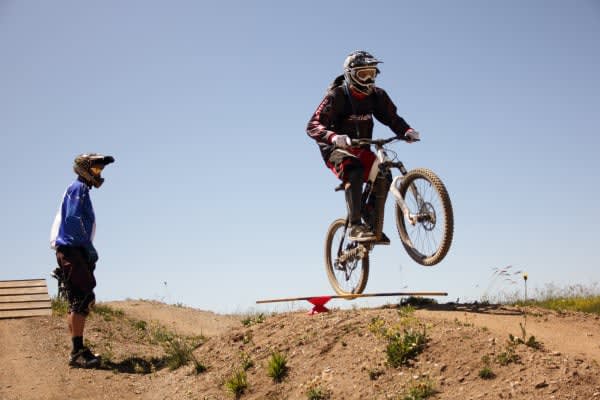
In downhill mountain biking, as in all extreme and outdoor sports, the last thing you want to do is put your brain down before you start your session! Listen carefully to the instructions given to you by your instructors or friends, and take the time to check the settings on your bike. But above all, keep a cool head and avoid getting carried away by the speed, the thrills and your potential riding ability. When you start out in this discipline, you'll have a lot of technical knowledge to acquire, and it's important not to over-rev your bike, with the risk of suffering serious crashes.
So don't try to go fast when you start! The aim will be to control your speed, even if it means stopping in front of obstacles you can't feel. Caution is the better part of valour...
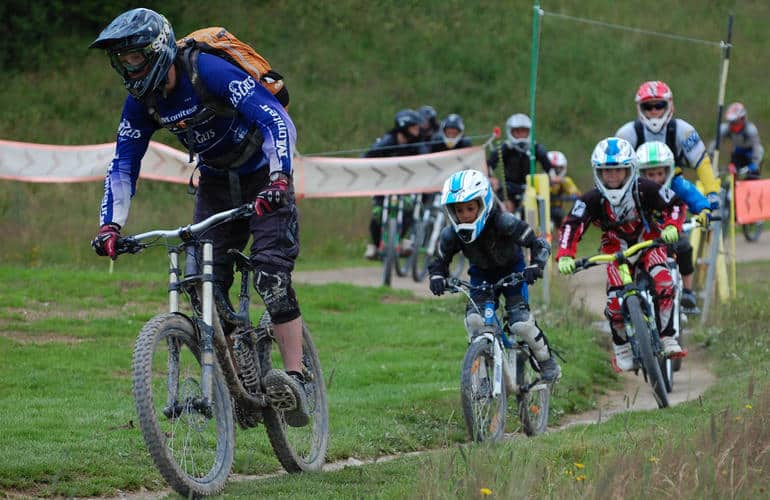
As a beginner, you might be tempted, once on the track, to try to avoid obstacles at all costs, to the detriment of everything else. The challenge is to learn to read the track, to concentrate on a line, a trajectory and to stick to it. Look far ahead, in the direction you want to go, memorising the obstacles and impacts ahead to prepare for them as best you can. There's nothing worse than an obstacle thrown at you at the last minute, without any forethought.... So remember, look far ahead, success is just around the corner!
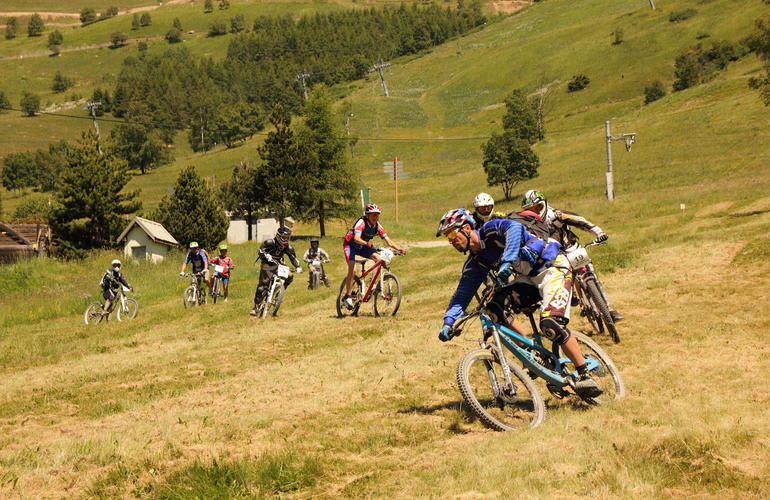
The quality of braking is very important on a downhill bike. Good braking enables you to control your speed, deal with obstacles and control the trajectory of your mountain bike - in short, it increases your enjoyment tenfold! Remember to anticipate the moments when you need to brake, and to time your braking. If you apply the front brake too hard, you risk going overboard...
In an emergency, it is generally recommended that 60% of braking should be done at the front and 40% at the rear. Don't forget to stand with your buttocks well back, almost on the rear wheel and your heels down for optimum braking. Remember to keep two fingers on the brakes at all times, so you're ready to react as quickly as possible!
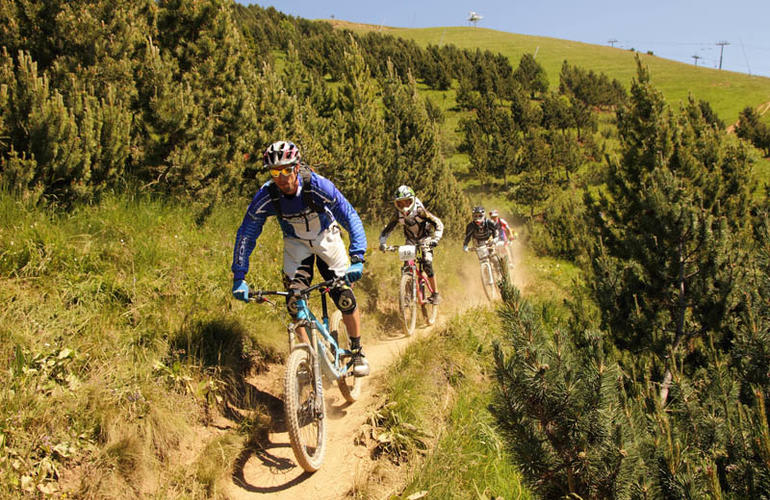
Falling over your handlebars and getting sunburnt - that's the fear of many beginner mountain bikers, especially when riding downhill! But rest assured, the Manawa Blog is here to help you avoid falling...
As we said, poor braking can clearly send you over the edge, so it's best to manage your passage over obstacles with an effective braking technique. The position on your bike will also be crucial: if you stand too far back, you could well end up eating the dust...
When you come up against an obstacle, remember to be centred on the bike, keeping your feet firmly planted on the pedals and your hands light. This will prevent you from going over the front!
Remember: your body must be relaxed, but your support to control the bike must be firm...
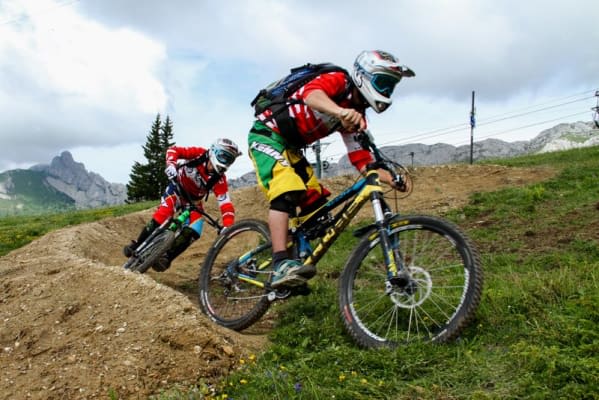
Flexibility in mountain biking doesn't really require the same prerequisites as in climbing, for example. But it's clearly important if you want to ride in comfort and control! So remember to keep your body as close to the bike as possible, without gripping the handlebars. Shift your weight backwards to better absorb impact.
We therefore recommend that you stretch before the excursion to avoid any false movements or stiffness... Don't forget your water bottle, as hydration is also essential!
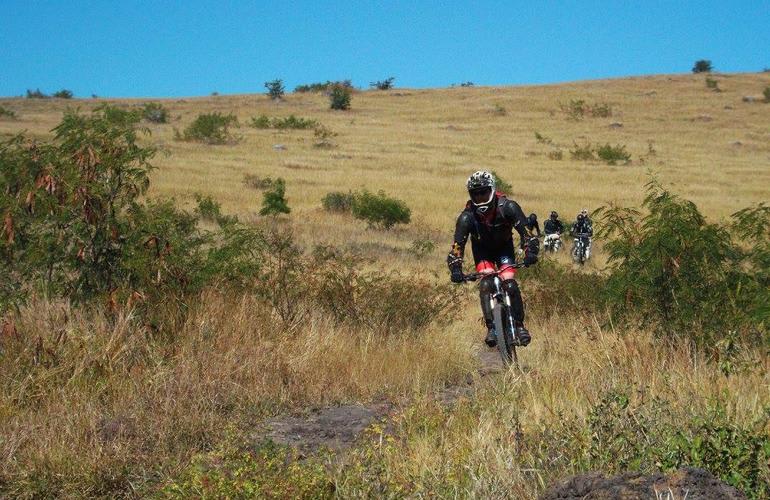
Another piece of advice before your first session on a downhill bike: take it easy! Riding tensely clearly increases the risk of falls, so let go, be vigilant on the various technical points (remember in particular to control your speed) and trust yourself. Everything should go well, and we guarantee you'll only want to do it again.
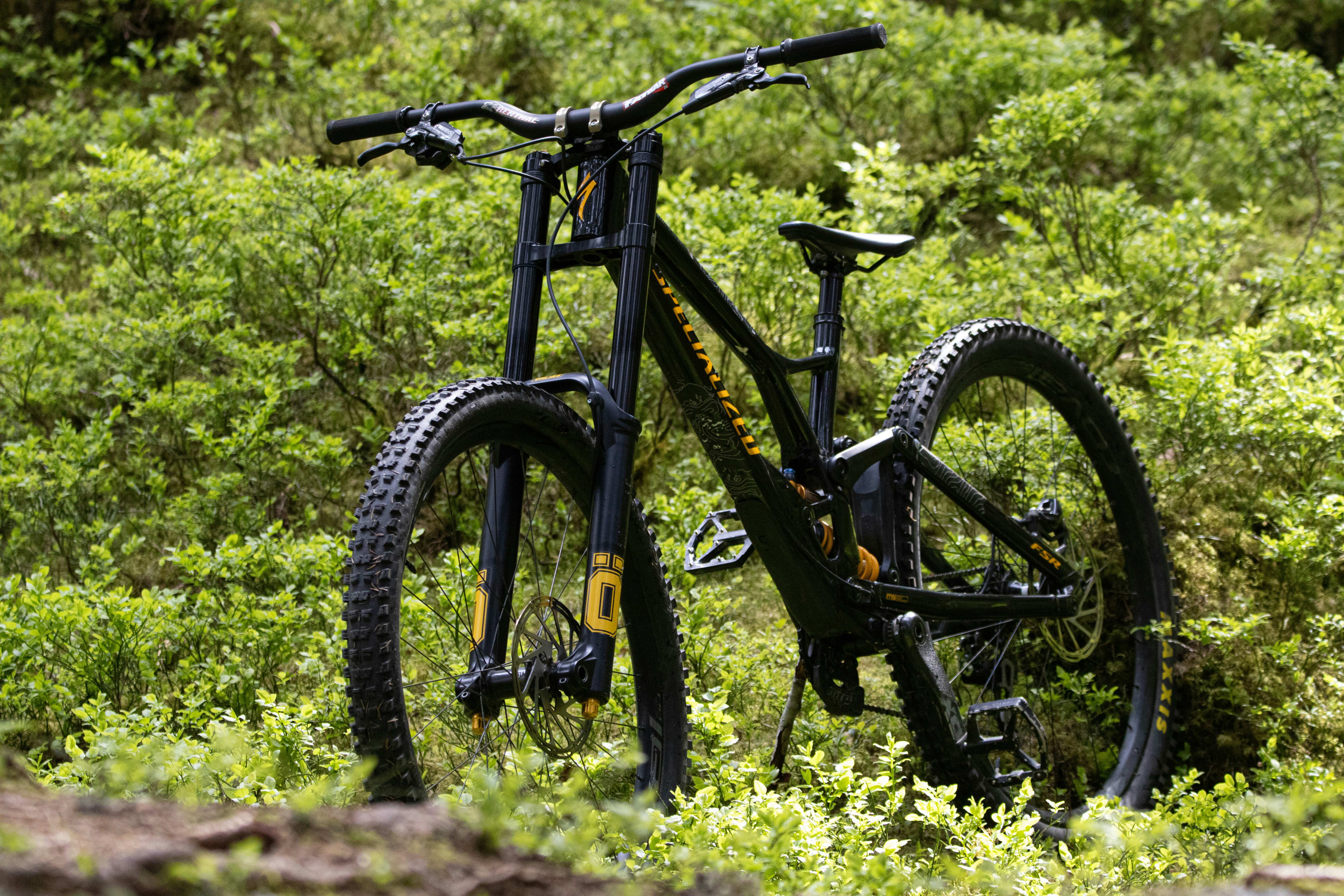
Regular maintenance of your downhill mountain bike equipment is essential for optimum performance and safety. After each ride, it's important to clean your bike to remove mud, dust and debris, paying particular attention to the chain, derailleurs and suspension.
Frequent checks on the condition of brakes, tyres and transmission are crucial to detect and correct signs of wear before they become major problems. Lubricate the chain regularly to ensure smooth operation and prevent rust.
Front and rear suspensions also require specific maintenance, including checking the air pressure in accordance with the manufacturer's recommendations. Finally, keep an eye on key components such as bearings and pivots, and replace damaged or worn parts to avoid breakdowns on the way down. Meticulous maintenance of your mountain bike will allow you to ride with confidence and prolong the life of the equipment.
A little bonus advice, because that's already number 11: Enjoy! Like all outdoor activities, downhill mountain biking takes you through magnificent landscapes and gives you plenty of thrills. In Les Gets, Morzine-Avoriaz, Alpe d'Huez or Chamonix Mont-Blanc, there are some great sessions waiting for you, so combine business with pleasure! Even if downhill cycling requires intense concentration, use your moments of respite to look around you and enjoy the beauty of the panorama... It would be a shame to miss out!
Now that you're armed with knowledge about this practice, it's time to take action, isn't it?
Check out our article on the best downhill mountain biking spots in the world to help you decide on your next destination! And don't forget to book your next mountain biking adventure!

Driven by a genuine passion for adventure, I love sharing my discoveries and passing on my tips with simplicity and enthusiasm. My goal: to inspire you, guide you, and spark your desire to experience your own unforgettable outdoor moments.